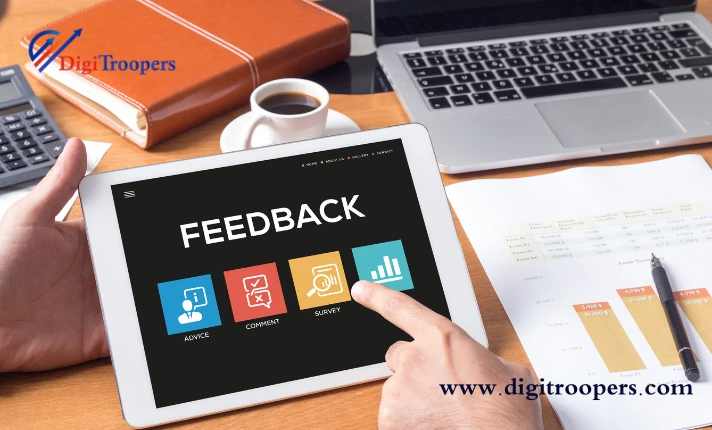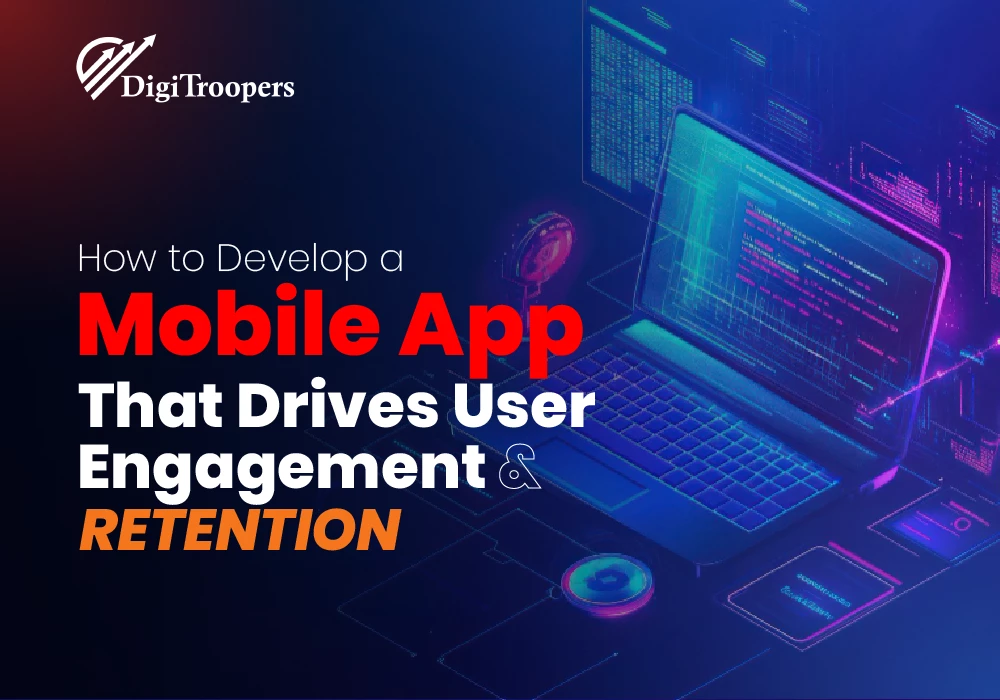Creating an app is one thing. But keeping users on board, getting them to use it regularly, and actually to love it? That’s a whole other game. Today, in the crowded app space, if you fail to hook users from the beginning, the app you worked so hard to create will end up buried and forgotten, just like those dozens of apps we all downloaded once but have yet to open up again.
This is why knowing how to create a mobile app effectively with user engagement and retention in mind is not only beneficial but also an absolute requirement in this competitive landscape. To that end, below I will take you through tried-and-true strategies, based both on personal experience and current trends in the field, using real-life examples and a few friendly nudges to abstract theories back into the real world.
Start With User-Friendly App Designs
User-friendly design is the building block of any successful app. Users bounce quickly if your interface isn’t intuitive. Understanding users’ intent is the best way to drive engagement with attractive app designs.
If you’re building a journaling app, for example, don’t present your users with too many choices at the start. Start simple. One team I collaborated with increased retention by 20% simply by tidying up their messy dashboard.
Keep layouts clean. Stick to essential actions. If you’re designing a wellness app, go for calming colours. But if it’s all about creativity, bright, lively tones are the way to go!
Push Notifications: Helpful Boosts, Not Annoying Buzzes
A good alert at the right time can be all the difference. The best push notification strategies come down to relevance and timing, not spam. In-app notifications and reminders to finish a task, return to a feature, or celebrate a milestone can all help to increase the stickiness of users to your product or service.
A language-learning app, for example, could say: “Your 3-day streak is ON—don’t stop now!” That’s smart use of notifications, prompting without being annoying.
Make It Fun With App Gamification Techniques
Who doesn’t appreciate a little shot of motivation? App gamification techniques include achievements and leaderboards, or challenges that trigger emotional, recognition-based rewards from spending time in this app.
A classic example of this is Duolingo. People use it not every day because they’re forced to, but because it’s fun. Even apps that aren’t games can put in streaks or badges to support maintaining that momentum.
Optimize In-App Messaging to Guide Users
In-app messaging optimisation is like a conversation for your app. Your app should feel like a friend who helps you, not a boss who demands things from you.
Too much pop-up guidance? Users get overwhelmed. Too little? They’re lost. A balanced combination of tooltips, welcome messages, and helpful nudges can make all the difference.
Build Feedback Loops Within the App

Feedback loops in apps are one of the most underrated tools. A quick thumbs up/thumbs down and a comment box after experiencing a feature—these little tools allow users to feel heard.
And on the backend? You get invaluable feedback on what works and what doesn’t. I recently saw an app change its homepage site based on user feedback, and usage rate doubled over two months.
Use App Analytics Tools to Understand Behavior
Do you want to get to know what users love and what they left? Avoid guessing—take advantage of app analytics tools. You can spot real-time behavior trends on platforms like Firebase or Amplitude, which help you make data-driven decisions.
Founders were shocked when their “star feature” was hardly touched. Data doesn’t lie. And you can’t measure what you don’t track.
Smooth Onboarding Is Everything
Your first impression takes place within seconds. Use simple app onboarding best practices: make it short, interactive, and skippable. Don’t put them in a tutorial jungle before they’ve seen what your app even does.
Let them feel the value early. Set encrypted account or permission steps to come later, once they are invested.
Ensure Cross-Device Compatibility
There are devices that leap between phones, tablets, and, in some cases, smart TVs. The reason for that is cross-device compatibility. 1. Test on all screen sizes and OS. The entire app experience should be smooth regardless of screen size or OS.
For example, someone logs food on an Android phone, then checks progress later on an iPad. Smooth syncing is equal to a happy user.
Focus on Mobile UX Improvements

But sometimes small changes can lead to big wins. Mobile UX improvements, such as quicker load times, improved navigation, or easier tap targets, can vastly improve retention.
Once I was able to get a team to improve the size of buttons on smaller phones, complaints about navigation disappeared overnight.
Social Sharing Features
Social sharing allows users to seal the deal with a bit of that shine. Finished a workout? Logged 30 days of journaling? Let them boast a bit—and let that attract more users.
Just make it easy. Just one-tap the share to Instagram or WhatsApp.
Build Retention-Driven Features With Purpose
If your features aren’t long-lasting, they won’t come back. Think retention-driven app features, those little hooks that keep people engaging with your product.
Spotify Wrapped is an excellent case in point. It’s something that brings users back once a year to see how they’ve been listening, and it spreads like crazy on social media.
Don’t Guess—Run A/B Tests
Blue button is better or the green one? Are you onboarding with video or with static cards? To find out, use A/B testing for apps. Try out different layouts, copy, and flows with actual users before making any final adjustments.
Even little wins here compound over the long run.
Use Behavioral Targeting for Personalization
Behavioral targeting in apps lets you deliver the right messages to the right users at the right time. It’s like you have a kind of smart assistant working behind the curtains, customizing those experiences.
Give someone a “next challenge” immediately when they complete a workout. If their journaling streak takes a pause, share a motivational quote. Timing and context are everything.
Add Interactive App Elements to Keep Users Engaged
Apps should feel alive. Add interactive app elements—sliders, drag-and-drop areas, and swipe cards. It keeps users engaged and creates a sense of connection.
Even small things like expandable menus or animated feedback make your app feel responsive and fun to use.
Real-Life Examples That Nailed It
A great example of many of these principles is Headspace. Their mobile app personalisation is sophisticated yet effective, their onboarding is impeccable, and their utilisation of interactive app components like soothing animations brings down tension.
Another winner is MyFitnessPal. It uses a feedback loop in apps, allows social sharing features, and makes some tracking tools provide constant value. Plus, it lets you customise goals and track progress on multiple devices.
Wrap-Up Thought
The thing is, building a great app is like any meaningful relationship. You do not just show up one time; you show up time after time, you learn, you adapt, and you care.
Just like how choosing a tech stack or picking a web development platform at the beginning of your business journey is often key to success, all the features, layout options, and messages in your app must be deliberate and user-centric.
Want people to stay? Make sure your app is worth sticking around for.


